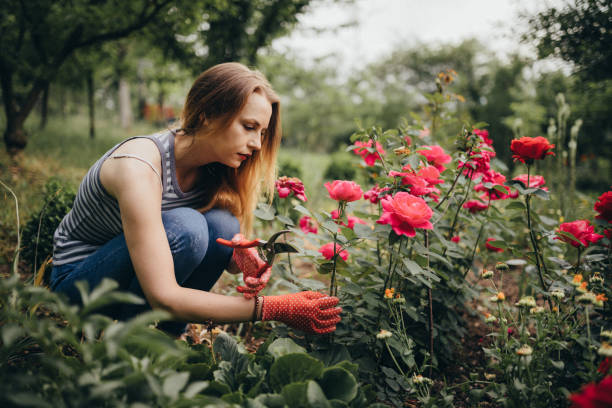Roses have a reputation for being difficult to prune. It is always important to prune your roses so that they can flourish. Knowing how to prune is a skill every gardener should have.
Not only does pruning roses control the plant’s shape and size, but removing dead, damaged, or diseased wood promotes better air circulation and improves sunlight exposure, meaning your rose bush will thrive.
Know when to prune
The best time to prune roses is in late winter or early spring, around the time new growth begins. Check your local weather forecast before pruning as climate changes can cause seasons to start later or earlier.
Here’s a step-by-step guide on how to prune your roses:
Step 1: Inspect your rose bush
Before you start to prune check the overall shape and condition of the rose. This allows you to see the structure of the rose bush and clearly see all the stems. Check for any pests that may have been hiding on the leaves over the winter.
Step 2: Prune the branches
Cut any dead branches off at the crown of the rose. When it comes to roses, if anything is brown it is dead, green means it’s living. Cut off any dead wood all the way down to the base stem of the rose. You can see dead branches by their lack of flexibility or their discolouration.
Step 3: Remove crossed branches
If there are any weak or crossing stems, cut them off to allow for airflow at the centre of the rose bush. Take out crossing branches which can rub onto each other, causing damage and encouraging disease. The goal is to have upward-reaching branches with an open structure in a vase-like shape.
Step 4: Get rid of weak growth
Remove any growth that is much thinner or weaker than that of your roses. There’s a rule gardeners use: remove anything thinner than a pencil.
Step 5: Remove suckers
These are the extra little stems that start to develop from the base of the rose. These are typically found growing below the crown. They are more common if you’re growing grafted roses.
Step 6: Seal your roses
Garden sealant helps protect your roses from unexpected temperatures that may arise after pruning. The garden sealant you use can also provide some security from disease or insects. They act as a bandage to an infected wound.
Step 7: Shape your roses
When shaping your roses, rather shape it at the top into a rounded dome rather than a flat top as this encourages flowering from top to bottom. This helps add height and width in the upcoming growing season.

Image Credit: Pexels
Pruning is vital to the health of the rose bush, it helps prevent disease by removing areas that may harbour infestations and also encourages flowering. Your roses may look stark after a good pruning, but roses grow prolifically and will fill in quickly.
ALSO SEE:
Feature Image: Pexels

